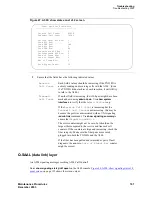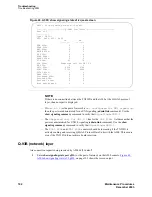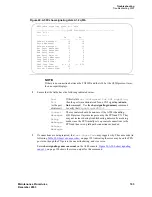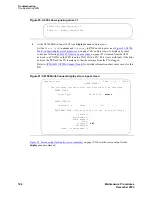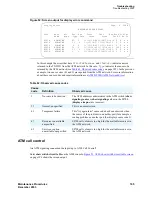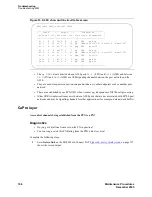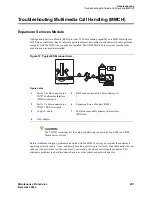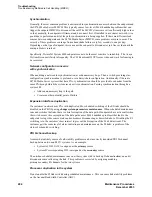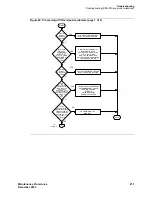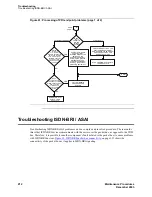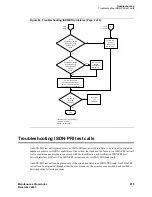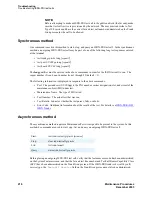
Troubleshooting
Troubleshooting Multimedia Call Handling (MMCH)
Maintenance Procedures
205
December 2003
Voice-activated switching problems
Voice-activated switching on the S8700 Media Server Multimedia Call Handler (MMCH) does not
follow the loudest talker. The MMCH queues every speaking party and selects a new video broadcaster
(the second-oldest speaking party) when the oldest speaking party has stopped talking. The new
broadcaster will see the last speaker as its video. The system can also “learn” about the noise coming
from an endpoint to help prevent false switches, adapting both to noise level and repetitive sounds such as
a fan. This adaptation occurs over approximately 10 seconds.
No switching, full-motion video
If a room is excessively noisy:
•
The S8700 Media Server MMCH may receive sufficient audio signal to conclude that there is a
speaker present. Use the Status Conference x screen to determine whether the MMCH thinks an
endpoint is talking. The MMCH sets the
Ts
field to
t
for each endpoint if there is voice energy
detected. This endpoint may have to mute when nobody at the site is speaking to allow the
conference to proceed normally.
•
Remind the customer that it may be necessary to mute if a side conversation is going on in the
background, just as one would do in an audio conference.
•
If the system does not switch broadcasters even after the current broadcaster has muted, check the
conference administration using the display conference X command to ensure that the conference
is in voice-activated mode. Also verify that parties who were speaking are valid video sources as
described in
The See-Me feature (MCV) can also cause VAS to “lock-up.” An endpoint can activate MCV to force
their site to become the broadcaster. If they do not disable the feature when finished, the system remains
in this mode indefinitely. The status conference X command shows that MCV is in effect by displaying
av
in the Video Status (Vs) column. Page 3 of the Status Conference X Endpoint Y screen also has a
Broadcaster
field that indicates MCV is in effect with (SEE-ME) as the broadcaster.
The same scenario can occur in a CHAIR or UCC-controlled conference with a designated broadcaster.
In this situation, the CHAIR/UCC has not released the designated broadcaster and returned to VAS mode.
If there is a UCC-designated broadcaster, status conference X indicates a Video Status of
u
. Also, for
UCC rollcall the return video may appear to be stuck. Check the Video Status for an “
R
,” indicating
rollcall.
If none of the previous examples appears to be the cause and if the room was quiet, every speaker is a
valid video source, the conference is voice-activated, and the speaker can be heard, then escalate the
problem.
Video never switches to a particular party
Description
Verify that the endpoint is a valid video source as described in
If it is, then the audio from the endpoint may not have sufficient voice signal for the hardware to
determine that the parties at the endpoint are speaking. Check the
Talk
field on page three of the Status
Conference X Endpoint Y screen to see if the
talking bit
is
y
. Next, check the audio by standing
adjacent to the microphone and speaking at a normal level.
Summary of Contents for CMC1
Page 1: ...Maintenance Procedures 555 245 103 Issue 1 1 December 2003 ...
Page 14: ...Contents 14 Maintenance Procedures December 2003 ...
Page 416: ...Additional maintenance procedures IP Telephones 416 Maintenance Procedures December 2003 ...
Page 426: ...Index X 426 Maintenance Procedures December 2003 ...

